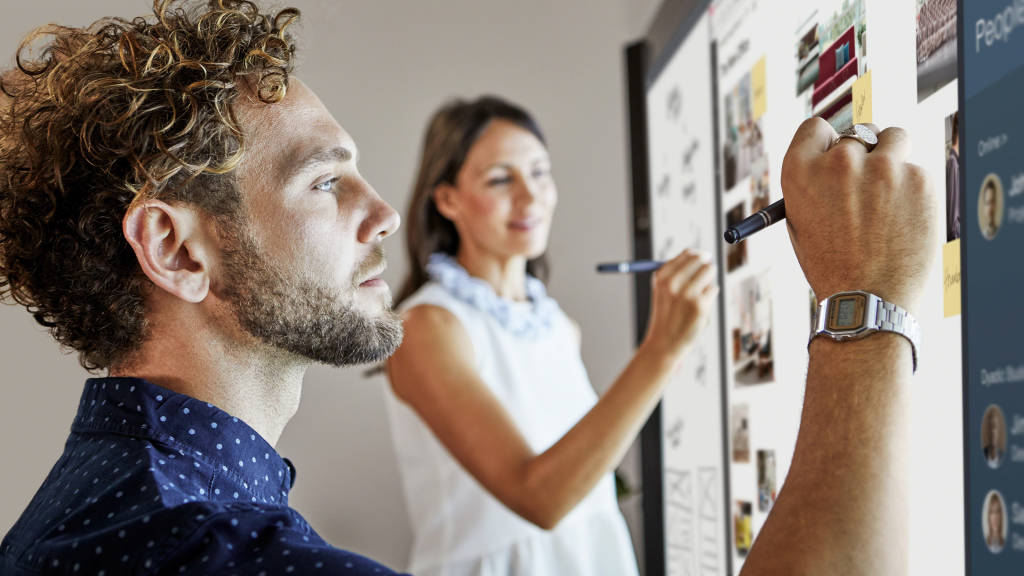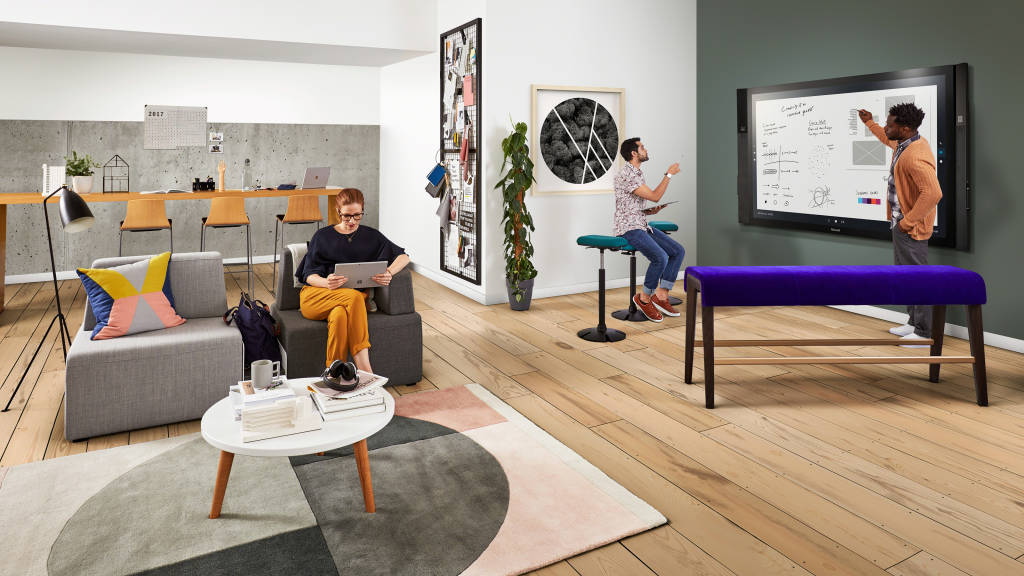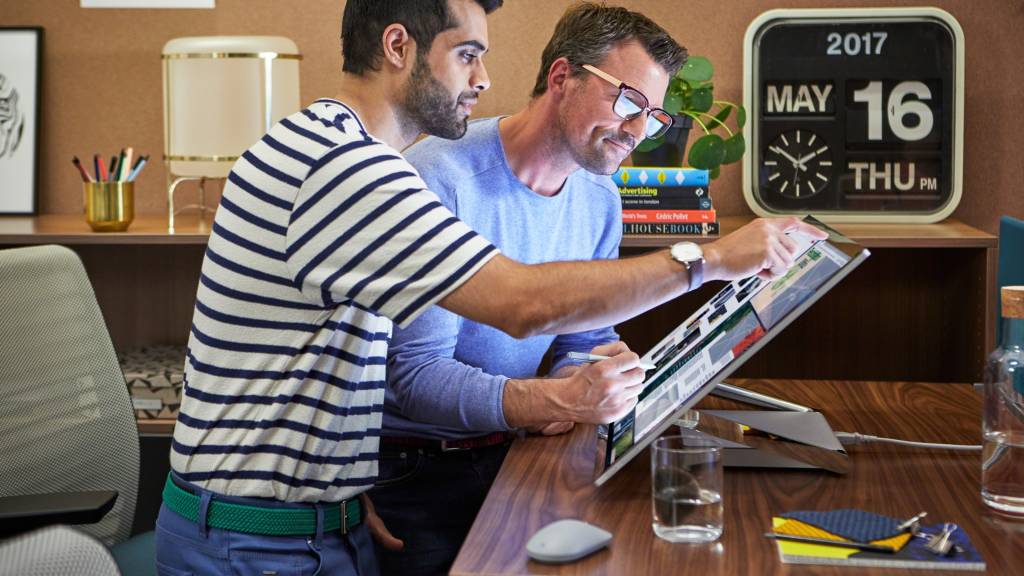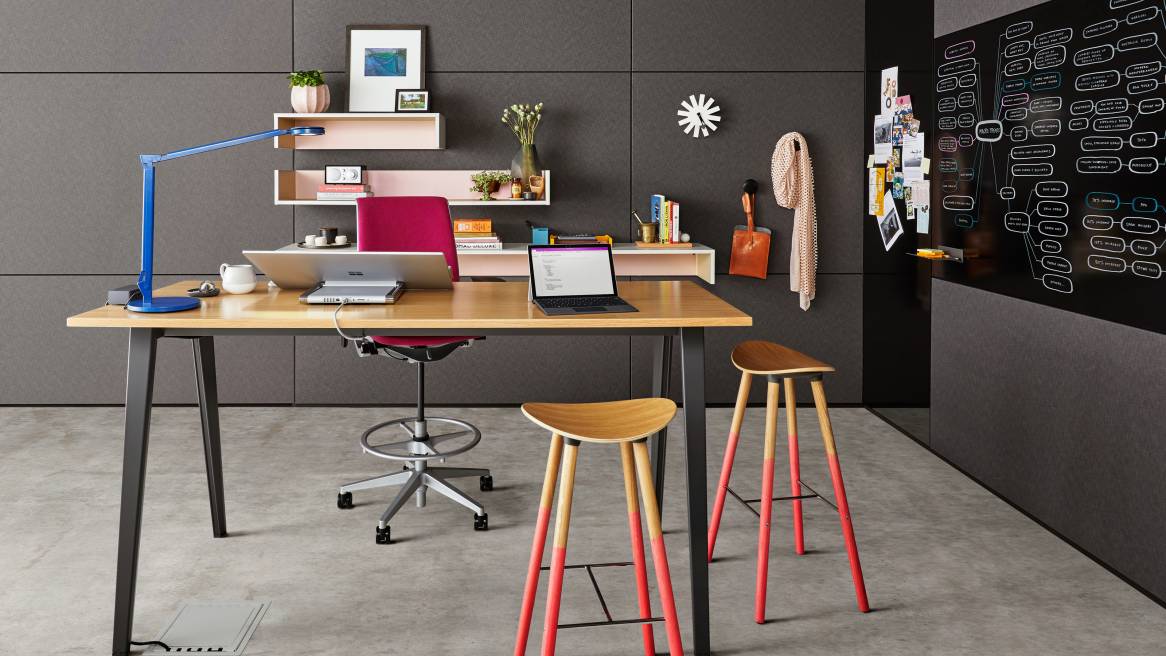Design Thinking and Its Role in the Creative Process
Thinking like a designer can transform how we develop products, services, processes and even strategy.
By Kim Dabbs, Steelcase Director of Applied Research + Consulting EMEA
Creativity is a numbers game. Take one look at Thomas Edison, inventor of the light bulb and record holder of 1,093 patents. That’s 1,093 brilliant ideas, from which only a single handful of feats were realized. Add to that the unimaginable number of ideas which didn’t make it to patent stage, and it’s clear that even the most creative people rarely succeed on the first go.
But, that doesn’t stop them from consistently generating ideas. And from those ideas, newer, more developed, ideas grow. It’s a calculated trial and error process, in which innovators are able to learn from each failure and iterate by refining, altering or building each new version. And in a time when the importance of the creative economy is fast emerging amidst a volatile and changing world economy, the ability to innovate has never been more important.
360 FOCUS: CREATIVITY, WORK AND THE PHYSICAL ENVIRONMENT
Get in-depth research on how people, place + technology can work together to boost creativity at work.
Excel with empathy
With the dawn of the fourth industrial revolution, intervals of innovation are shortening at a rapid pace. Businesses are scrambling to emulate the speed and ingenuity of emerging companies, and are vying for consumer attention in an already saturated market. Now more than ever, creativity and innovation have become critical skills for achieving success in developed economies. Where technological advancements continue to change the business landscape and automate job roles as we know them, employees have the opportunity to excel by leveraging empathy through thinking critically, analyzing situations and offering emotional, creative and intellectual value where computers cannot.

Enter design thinking – not a new concept, but one which has embedded itself in a growing range of industries around the world in recent years. For the innovator, design thinking represents an approach which minimizes the uncertainty and risk of innovation. In focusing on rapid iterations of an idea and actively engaging the customer in open dialog throughout the process, a company is better positioned to understand the root cause that really needs addressing and the product or service features they need to deliver to meet that need.
Think like a designer
When we think like a designer, we are able to transform the way we develop products, services, processes and even strategy. Drawing on logic, systemic reasoning and imagination to explore the possibilities of what could be, design thinking approaches creativity from a different angle, cycling between divergent and convergent thinking. This means building up as many solution-focused ideas as possible, and then narrowing the decision of how best to move forward.
With design thinking, our ideas are constantly evolving with each new attempt and each new insight drawn from the users need at hand. Iterative and repeated often from numerous angles, the creative process is not a linear one, and should never be treated as one. And it is highly social, with some of the best ideas eventuating as a result of empathy, interaction and exchange. It should come as no surprise that our workplaces play an integral role in enabling the creative process and ensuring employees have the support, inspiration and adaptive environments needed to interact and innovate.

More and more we are seeing larger, more established organizations strive to emulate the innovative culture of “startups.” However, scaling creativity and innovation methods requires structure and process, and the same mindset and practices which help make large organizations well-oiled machines, can often be the main barriers which stifle the innovation and creative processes.
Creativity and innovation flourish when senior leaders understand the importance of failure in the creative process, and purposefully design an environment and provide resources which allow teams to experiment, fail, learn, and explore new approaches in order to become smart risk takers.
Foster a creative culture
When our working experiences and environments foster a culture of choice and control, then the likelihood of attracting globally minded, innovative thinkers increases considerably. As does the propensity for achieving the golden ‘aha’ moment when a transformational insight is discovered.

It’s about offering a variety of individual and collective work spaces and postures which support employees and teams through the various modes and stages of the creative process. An important part of this process is ensuring employees have the choice over how and where they work throughout the day based on the task at hand. This also means providing space to unwind and rejuvenate. When the mind is relaxed and solitary, it can wander freely and open the inner stream of the creative voice more easily.
As the race to accelerate business calls for organizations to deliver bigger, faster and better innovations, design thinking is proving an important tool to help employees gain greater clarity and to find viable and desirable ideas in the creative process. Beyond the innovator, it can benefit every function in an organization, forcing user-centricity and continuously encouraging employees to seek new ideas, insights and concepts in order to help them design solutions that will delight and engage while also providing meaning in our daily lives.
 Kim Dabbs is Director of Applied Research + Consulting for Europe, the Middle East and Asia (EMEA) at Steelcase. She is based in Munich where she helps customers by connecting them to Steelcase’s extensive workplace research to help them achieve organizational success. Previously, Kim has been the Director Regional Learning Group in EMEA and helped launch the new Learning + Innovation Center in Munich. She holds a Master of Public Administration, Nonprofit Management from the University of Michigan and a Bachelor of Science in Art History from Kendall College of Art and Design. She presents nationally on social innovation and design thinking at venues such as the Guggenheim, the Aspen Institute and TEDx.
Kim Dabbs is Director of Applied Research + Consulting for Europe, the Middle East and Asia (EMEA) at Steelcase. She is based in Munich where she helps customers by connecting them to Steelcase’s extensive workplace research to help them achieve organizational success. Previously, Kim has been the Director Regional Learning Group in EMEA and helped launch the new Learning + Innovation Center in Munich. She holds a Master of Public Administration, Nonprofit Management from the University of Michigan and a Bachelor of Science in Art History from Kendall College of Art and Design. She presents nationally on social innovation and design thinking at venues such as the Guggenheim, the Aspen Institute and TEDx.
360 FOCUS: CREATIVITY, WORK AND THE PHYSICAL ENVIRONMENT
Get in-depth research on how people, place + technology can work together to boost creativity at work.


